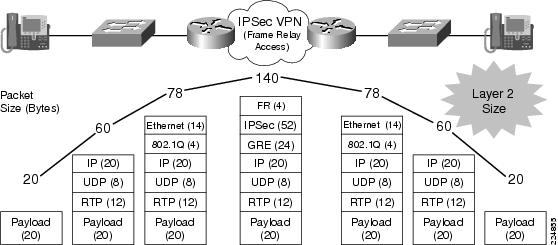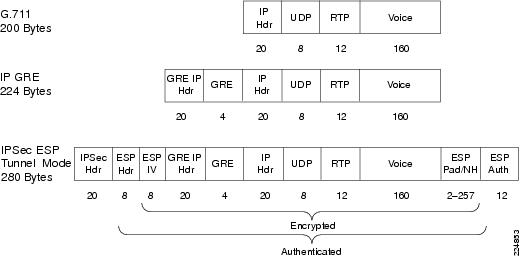DOCUMENTATION 》 VPN Network Optimization via TOFFEE WAN Optimization
VPN Networks may degrade network performance due to various packet processing overheads such as encryption and by adding extra network protocol header(s) (such as IPv4/IPv6, IPSec, etc). This may inflate near MTU sized packets and causes excessive packet fragmentation. Here are the few examples of packet processing involved in a VPN (or a VPN like) Tunnel.
Example 1:

* Image courtesy CISCO
Example 2:

* Image courtesy CISCO
VPN Network optimization with TOFFEE: With TOFFEE you can optimize these packets even before they get processed on to a VPN device. TOFFEE
optimizes packet contents (application payload and transport headers) so that these TOFFEE optimized packets when they get processed by VPN devices
(or VPN software stack) they may never need further packet fragmentation. Here is a deployment scenario of TOFFEE with VPN devices:

For more details kindly watch the Youtube video below:
Tópicos sugeridos:
TOFFEE - Otimização de WAN
Categories
| 💎 TOFFEE-MOCHA new bootable ISO: | Download |
| 💎 TOFFEE Data-Center Big picture and Overview: | Download PDF |

Saturday' 13-Mar-2021

Saturday' 13-Mar-2021
Featured Educational Video:

Saturday' 13-Mar-2021
Research :: Optimization of network data (WAN Optimization) at various levels:

Learn Linux Systems Software and Kernel Programming:
![Linux, Kernel, Networking and Systems-Software online classes [CDN] Linux, Kernel, Networking and Systems-Software online classes [CDN]](http://sareesaremypassion.org/cdn/the-toffee-project/i/the_linux_channel_banner2.jpg)
Hardware Compression and Decompression Accelerator Cards:
![TOFFEE Architecture with Compression and Decompression Accelerator Card [CDN] TOFFEE Architecture with Compression and Decompression Accelerator Card [CDN]](http://sareesaremypassion.org/cdn/the-toffee-project/i/DOCUMENTATION/33/TOFFEE%20compression%20hardware.png)
TOFFEE-DataCenter on a Dell Server - Intel Xeon E5645 CPU:






